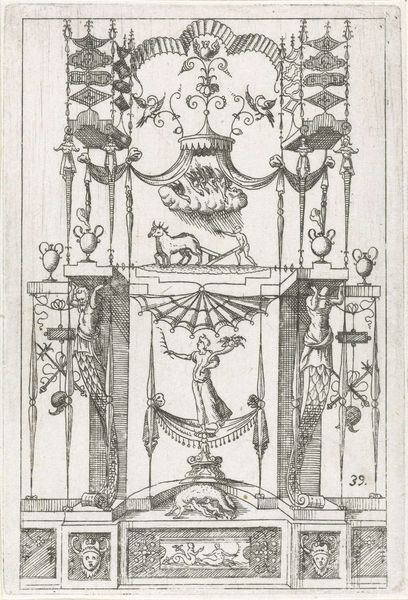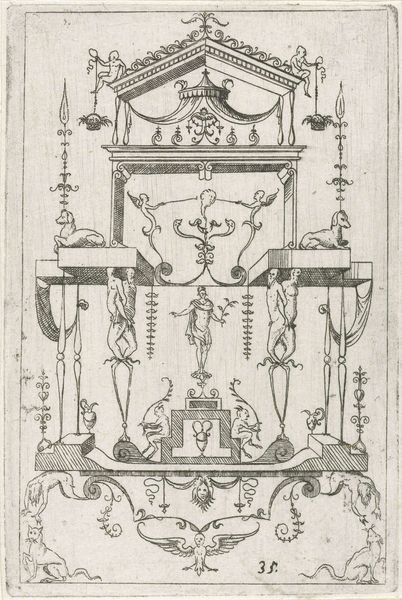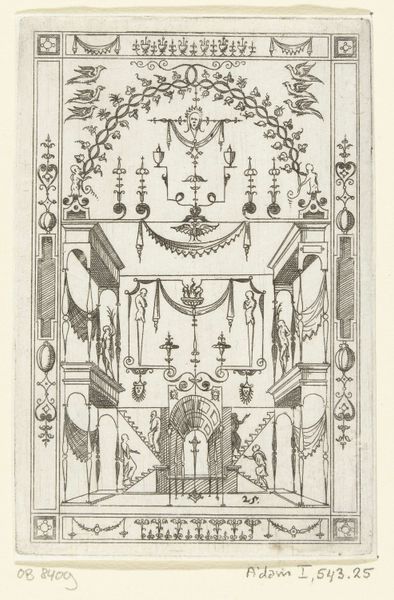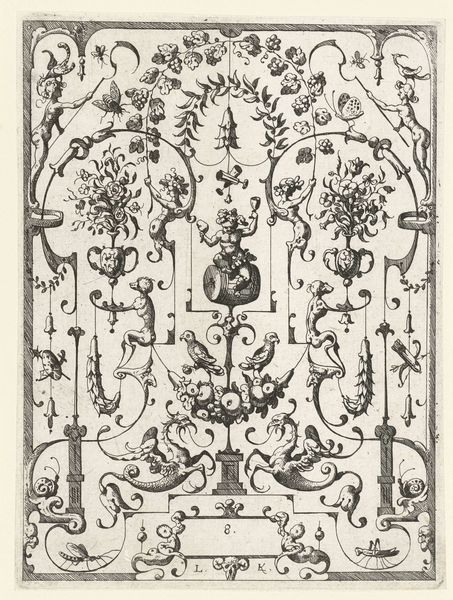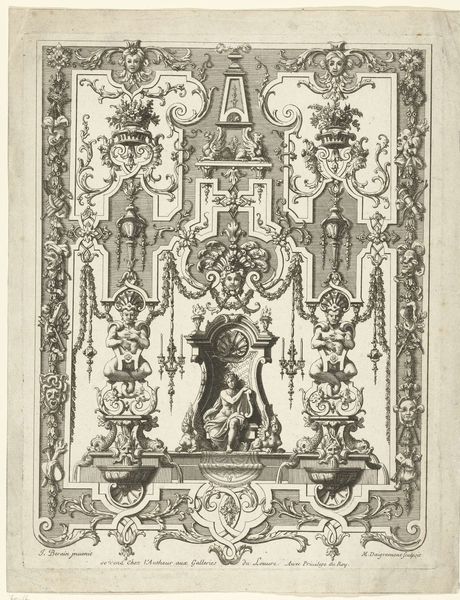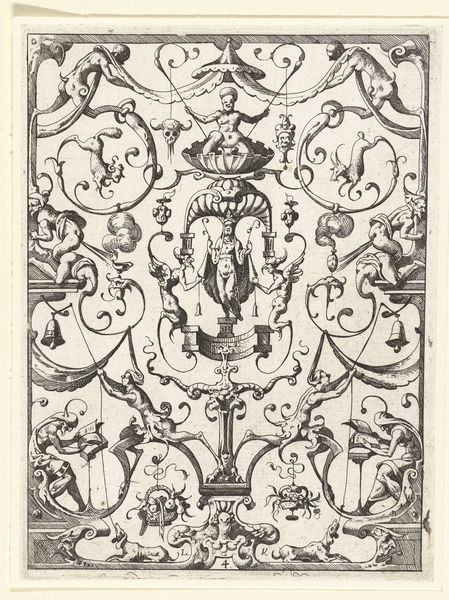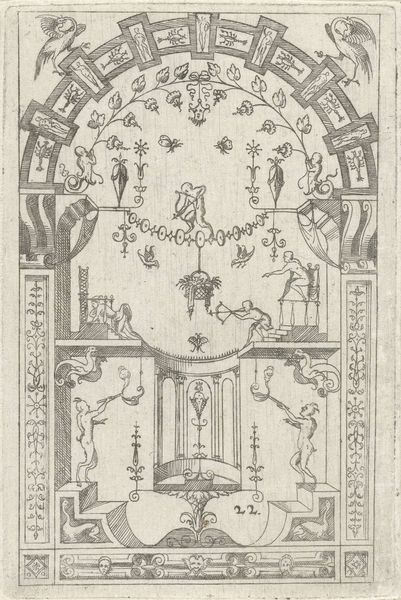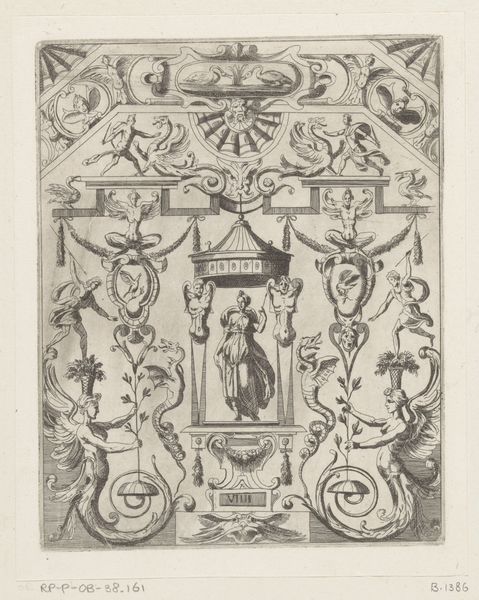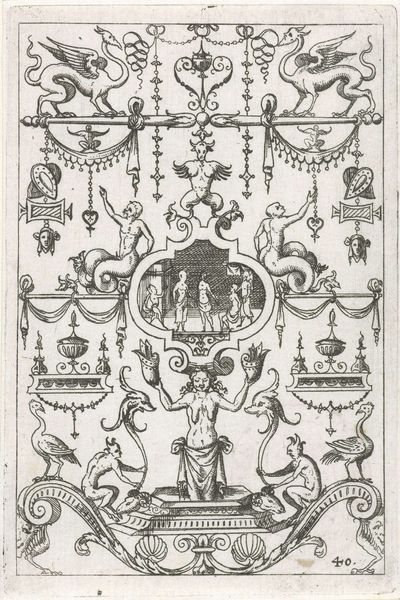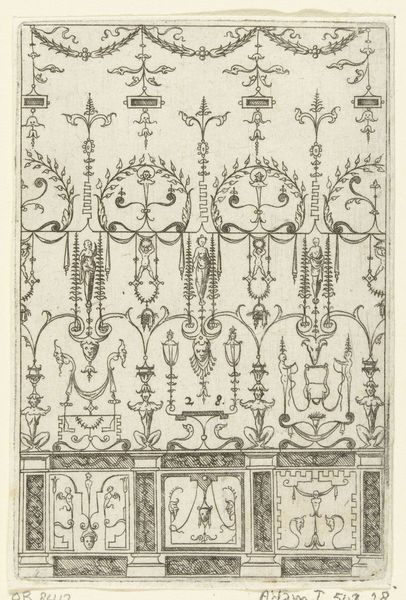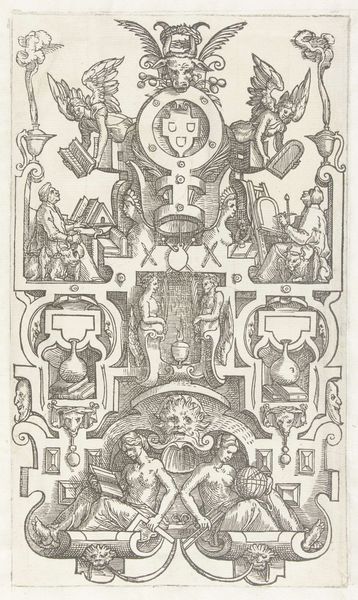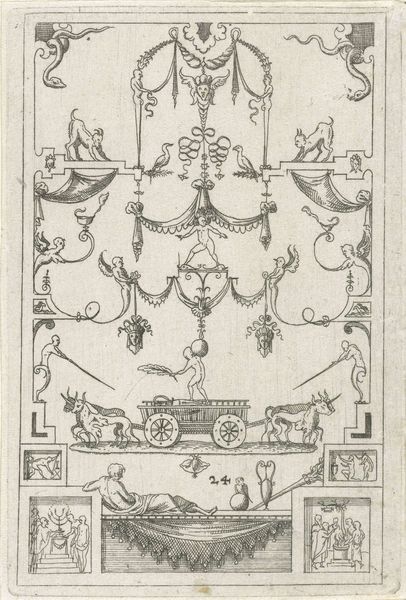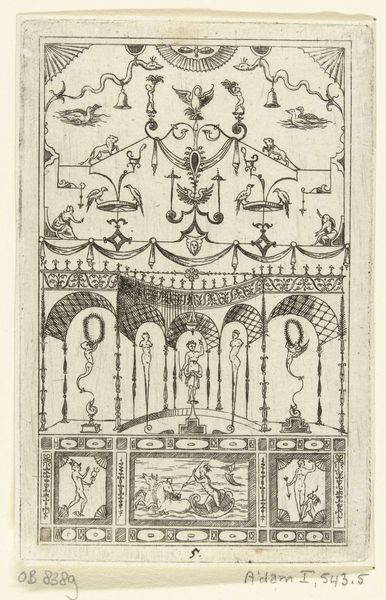
Op een sokkel, gedecoreerd met vissen en mascarons, staat een ton met een herme erop c. 1525 - 1594
0:00
0:00
drawing, print, ink, engraving
#
drawing
# print
#
figuration
#
11_renaissance
#
ink
#
northern-renaissance
#
decorative-art
#
engraving
Dimensions: height 106 mm, width 69 mm
Copyright: Rijks Museum: Open Domain
Editor: So, this is "Op een sokkel, gedecoreerd met vissen en mascarons, staat een ton met een herme erop", or "On a pedestal, decorated with fish and mascarons, stands a barrel with a herm" by Hans Sibmacher, created sometime between 1525 and 1594. It's an ink drawing, I believe, or perhaps an engraving. It has such an ornamental and detailed feel... What do you see in this piece, in terms of what it might communicate? Curator: Well, at first glance, it’s undeniably decorative, and that immediately positions it within the Northern Renaissance's embrace of elaborate ornamentation. But, let's think critically about the symbolism embedded in those details. What do the repeated fish motifs signify? Is it simply about decoration, or does it relate to contemporary trade, religious symbolism, or even gendered power dynamics within the burgeoning merchant class? The grotesque mascarons – those face-like ornaments – hint at a dialogue with classical antiquity, but also speak to anxieties about the body and the monstrous ‘other.’ Editor: So it's not *just* pretty... It's a conversation. Curator: Precisely! The image also incorporates human figures with fishtails: what do you make of their presence here, flanked by more ‘conventionally’ dressed human figures? Sibmacher isn't simply displaying technical skill, but rather creating an allegory. Consider the positioning, their gaze, what does it say about the era’s views of outsiders, otherness, even class or gender roles. And those hanging ornaments -- the drawing overall becomes a stage upon which to negotiate shifting societal values and anxieties, doesn't it? Editor: I hadn't considered the human-fish figures. Now, the whole piece feels less like decoration and more like social commentary. Curator: Exactly. It highlights how even seemingly innocuous "decorative art" can reflect power structures, anxieties, and evolving identities. Seeing art in relation to these issues gives us tools to challenge what we've taken for granted and ask questions about who benefits from specific types of "beauty." Editor: I will never look at decorative art the same way. Thanks!
Comments
No comments
Be the first to comment and join the conversation on the ultimate creative platform.
